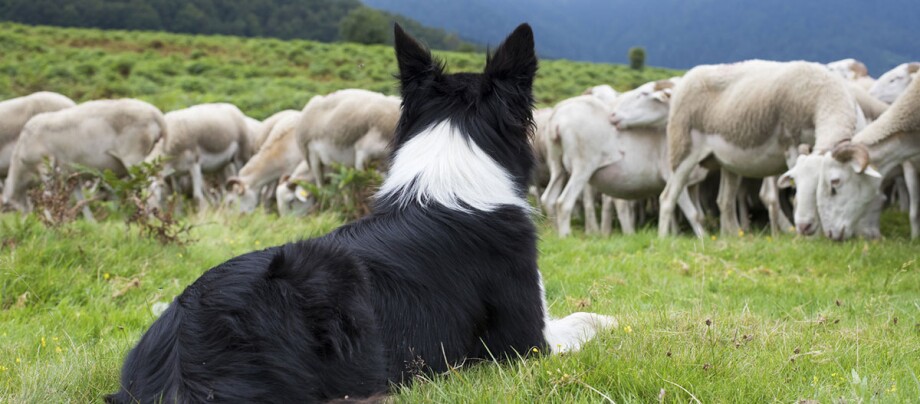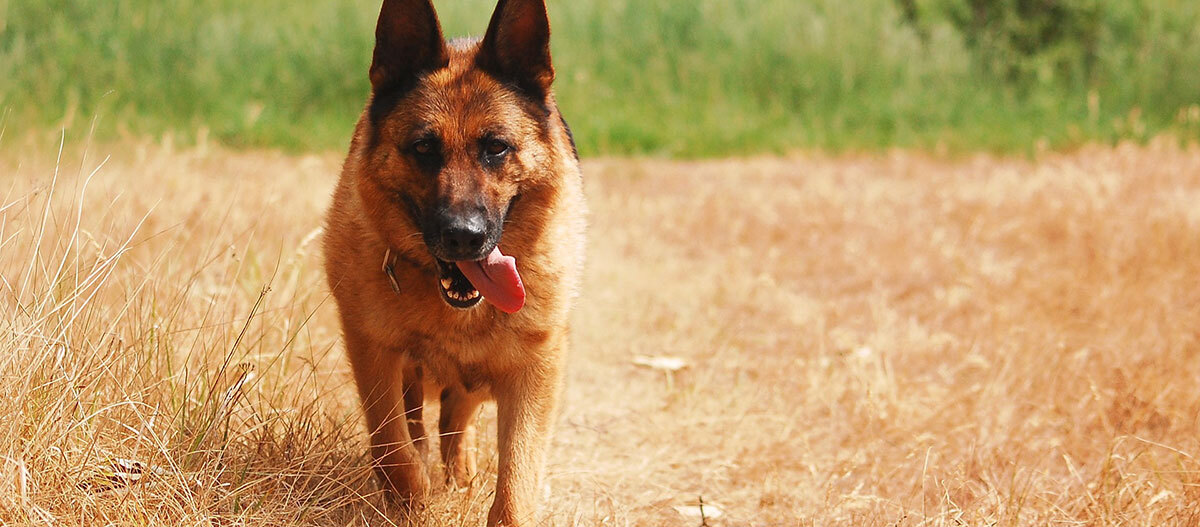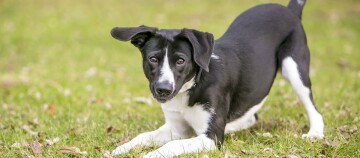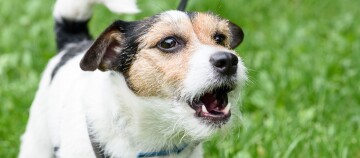Protective Instincts in Dogs – Protective Instincts and Avoidance
07.10.2022 - Reading time: 5 minutes

In human company, dogs have jobs: playful family friend, tactical herd manager, brave hunting companion – alert protection and guard dog. Protecting and defending the home and yard and its human carers is a classic dog job that is based on the animal’s natural protective instinct. However, this characteristic can become problematic if it is misdirected or exaggerated. Here you can learn how to steer your dog's ambitions to be the protector in the right direction.
- What is the dog’s protective instinct?
- Where does it cross over into misbehaviour?
- What to do if the dog wants to protect the baby?
- When do dogs develop their protective instinct?
- Are there breeds of dog with a particularly strong protective instinct?
- How do I cure my dog of its exaggerated protective instinct?
What is the dog’s protective instinct?
Did you know that in dog packs, the “guard” is not the job of the alpha animal? On the contrary, it is the less confident animals that instinctively monitor their surroundings, react agitatedly to unusual things and first check whether the disruption can be driven away by yapping or showing their teeth.
The task of the more dominant animals is to assess whether there really is a danger and to react appropriately as the lead animal – a division of tasks proven to work in nature. In a home with pets, you are the alpha that judges the dangerousness of a situation. And this is the source of most “protector problems”: If your dog gets the impression that its human does not exude the necessary authority, its impulse to defend the “helpless” member of the pack awakes and it ignores your leadership in the situation.
Protective instinct
- The dog feels that its human does not have control of an unusual situation and it has to take the initiative for the “weaker” member of the pack.
- The animal feels a person’s nervousness and physical reactions – for example uncertainty in view of possibly dangerous encounters, such as with drunk people.
- Misinterpreting human behaviour in a harmless context (e.g. Friendly embraces between carers and “strangers”) lead to protective behaviour.
- Self-protection: Your dog’s unpleasant experiences from the past can also trigger the protective instinct. Sadly, the triggers often cannot be explained, especially if the animal’s previous history is unknown.
It is noteworthy that many dogs have a much stronger protective instinct at night than during the day. An animal that is relaxed when on “walkies” in daylight may react significantly more suspiciously on the same route at night. Certainly the subliminal tension of the carer in this situation can transfer to the dog, although even the basic setting seems to affect the dog’s readiness to protect.
Where does it cross over into misbehaviour?
In guard dogs and protection dogs, the impulse to protect an area or the carer is exploited, intensified through breeding and trained separately. If the dog barks at unauthorised people on the site or defends its humans in dangerous situations, this is desired behaviour both for the dog and the owner.
It becomes an issue if the protective instinct occurs in inappropriate situations: If the dog starts barking or snapping at passers-by and other dogs for no reason, or does not know the boundaries of its territory. There is a fine line between desired and escalating protective instinct and it is crucially affected by the behaviour of the human carers.
Clear body and voice signals in dogs with an instinctive protective behaviour are:
- Barking and yapping when detecting people or animals nearby, even out of sight (for example: people in a stairwell)
- Growling or yapping at other people and uninvolved people nearby
- Snapping or jostling at the presumed source of danger, such as a strange dog
- Hair on end as a sign of tension
- Its body becoming rigid
- Distrustful staring at people when on a walk
What to do if the dog wants to protect the baby?
Particular care is required if a baby joins the human pack. The dog’s instinct to protect the “young animal” may be triggered; it may also want to “teach” the baby. As babies are not puppies. this can have tragic consequences. Therefore, never leave dog and baby unattended and make it clear to the animal that it does not have to supervise the small member of the family. This is your task.
When do dogs develop their protective instinct?
Even puppies can show the first signs of protective behaviour. Consistent training from the very start and banning unwanted behaviour are necessary in order to teach dogs otherwise. The animal should understand the situations in which its behaviour is appropriate. You should also remain relaxed and confident if the dog’s protective instinct reawakens in its teenage or older years.
Are there breeds of dog with a particularly strong protective instinct?
The protective instinct differs individually from dog to dog. Even within the same breed there are animals with a high or a completely lacking protective instinct. The training and confidence of the owners also determine the intensity of a protective instinct. In fact, there really are breeds of working dogs whose protective instinct has been strengthened through breeding. Such “protective” breeds are Dobermann, sheepdogs, Belgian shepherd, Hovawart, Rottweiler and terriers.

How do I cure my dog of its exaggerated protective instinct?
Even if the dog’s protective instinct is expressed as loyalty and attachment, without checks it can grow into a problem and can quickly turn into aggression. In extreme cases, it is possible that the animal will no longer let other people approach its carer, even within the family pack. In general, the following applies: If your dog is showing unwanted behaviour, you should consistently correct it. React with confidence by immediately taking the initiative as soon as the animal starts acting as protector in an inappropriate situation.
The dog must be obedient and callable: Take command with a clear instruction (“Sit!”, “Stay!”).Alternatively, try to attract the dog’s attention and interrupt the eye contact between the animal and presumed “danger”. The dog should always be behind you: By going ahead and standing between the dog and things that it could consider dangerous, you are protecting your dog as a confident pack leader that has control of the situation.
Being led on a lead can also reinforce the dog’s feeling of safety and its subordination. Never shout at your dog: In an inflamed situation, the animal can misinterpret this as “encouragement”. When taking your dog for a walk, therefore, approach it early on and “welcome” it whenever it is friendly and running without a lead.


